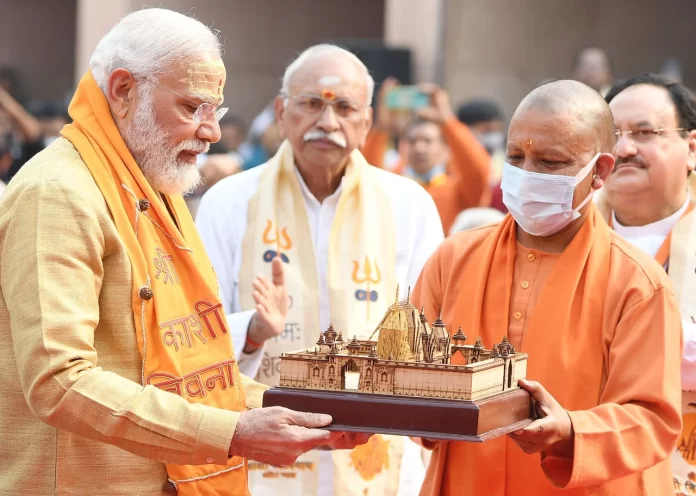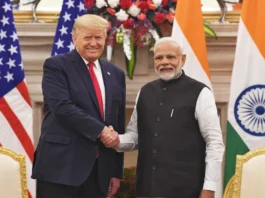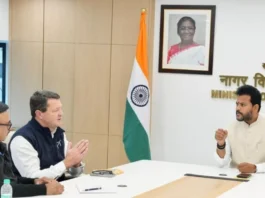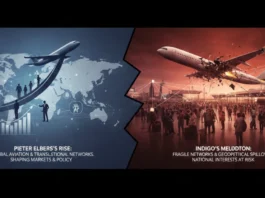An article in the Pakistani daily Dawn has an interesting perspective on the slogan “ab ki bar double engine ki sarkar”, which is Prime Minister Narendra Modi’s battle cry as he travels across India to help allies competing for state government elections (this time a double-engine government). This implies a BJP government at the national level and in each of India’s 28 states. Residents of the state are assured that two engines pulling together would produce double the power.
But Modi’s twofold engine metaphor transcends India’s state-level electoral politics in terms of its fundamental significance. It is, in fact, about reimagining national ideology, culture, and education. We must examine the two engines to comprehend why India currently holds such a prominent position on the international stage and how it could fall.
The first engine propels India towards prosperity and modernisation. It has sent Indian spacecraft to the moon and Mars, placed India’s IT and pharmaceutical firms among the world’s greatest, filled America’s best institutions with Indian university graduates, and built some of the world’s largest commercial empires. Several prominent Silicon Valley entrepreneurs are of Indian descent.
Recently, President Joe Biden said, “Indian Americans are taking over the country.” In the United Kingdom, Rishi Sunak is the new prime minister, and his wealth exceeds that of King Charles III, who just took over the reins. Sunak’s India-based father-in-law is the founder of Infosys; the market capitalisation of this Indian IT giant just surpassed $100 billion.
These are accomplishments from the past that modern Hindu nationalists, who are filled with vanity, think evidence of Hinduism’s greatness as an old civilisation. But China has been more successful overall. Even though they are significantly less populous, many developing nations in East Asia, such as Japan, South Korea, Vietnam, and Singapore, can also brag about having higher performance than India.
These are accomplishments from the past that Hindu nationalists with current-day pride attribute to their ancient civilisation’s glory. However, China has performed even better. And, although being much smaller, a number of East Asian emerging economies, including Japan, South Korea, Vietnam, and Singapore, also boast greater performance than India.
In every instance, the secret to success is well-known; previous governments have established robust educational systems that cultivate modern-day skills, knowledge, attitudes, and social behaviours. Additionally, a high work ethic among the labour force. In other words, strong national achievement results organically from the speed with which a country universalises or “Westernizes” its education and instils favourable work attitudes.
This is how India evolved into the present day. Britain colonised India and strove to disseminate Western education and ideals, aided by the scientific and industrial revolutions. Conservative Hindus vehemently rejected this modernisation, but reformist organisations led by Ram Mohan Roy’s Brahmo Samaj and others made significant advances.
In 1947, under the leadership of Jawaharlal Nehru, an avowed Hindu atheist devoted to scientific temper,’ India was intellectually prepared to engage the contemporary world. India’s education aimed to foster a pluralist, secular, and scientifically minded society for the next 50 years. It continues to produce abundant crops, which the BJP gladly appropriates as its own.
Hindu nationalists now seek a significant revision of India’s aims and self-image. The second engine of Modi, fueled by feverish imagination, propels India in the direction of recreating an idyllic Hindu Rashtra from the past. This regressive engine makes us believe that in ancient times India had knowledge of plastic surgery, aeronautics, and satellite vision. In other words, this engine would have us believe that we were living in a time when we had advanced technology.
What if individuals like Roy and Nehru had never existed? Under engine two, education in India would have been based on Sanskrit, and English would have been barely understood. Post-independence India would have been a dumping ground for all forms of pseudoscience. The focus of medical research would have been on medications derived from dung and urine from certain animals, the celibacy certain birds would have been closely examined, astrology would have been taught in place of astronomy, and Vedic mathematics would have replaced actual mathematics.
Consider what transpired with subcontinental Muslims and Pakistan.
Before two hundred years ago, it was abundantly evident that the tedious daily repetition of memorisation in traditional madrassahs was completely unsuited to the modern era. In the meantime, children of Indian parents attending English-medium schools learned trigonometry and logarithms, the properties of solids and gases, and experiments demonstrating that these substances adhered to particular laws. Instead of teaching the glories of kings and emperors, schools emphasised the importance of democratic and legal regimes.
The ulema throughout India vehemently rejected the contemporary curriculum. Even if he sent his sons to school or, as infrequently occurred, to Oxford or Cambridge, the zamindar and jagirdar found little utility. Very few students choose science, medicine, or rigorous education. Most learnt only the social graces necessary to ensure their home social standing.
Sir Syed Ahmad Khan’s call for revamping Muslim education was the loudest. He stated that madrassahs are completely unneeded. Using religious idiom, he pushed vehemently for science and modernism. While his efforts resulted in some degree of colonial system operation and employment, they were less extensive and as profound as those of Brahmo Samaj. Sir Syed’s impact was constrained by opposition from the right.
Thus, by the time Partition occurred, there was a significant Hindu-Muslim divide. Nonetheless, during the first few decades, Pakistan’s number one engine gained strength steadily and was consistently stronger than its number two engine. Pakistan’s space programme, which began in 1961 and is now defunct, predates India in many respects.
After Pakistan’s engine, No. 2, seized control in the 1980s, forward movement slowed and ceased. Standards and workforce competency have decreased. Institutions and organisations gradually disintegrated due to an absence of modern-minded individuals. Despite billions invested by the United States, China, and Saudi Arabia, industrialisation failed. Finding Pakistani graduates capable of completing even the most fundamental responsibilities became more difficult. It was attempted to throw more money into education, yet learning outcomes declined.
With each year, the distinction between madrassahs and normal schools in Pakistan has diminished. According to numerous studies, pupil learning has declined to Somalia-like levels. Adding further fuel to engine #2, the PDM administration has accelerated the adoption of Imran Khan’s regressive Single National Curriculum. Without agency, we gravitate downhill. Will India someday meet the same fate as Pakistan? That depends on which of its two engines has the greater pulling power. The same goes for India.






